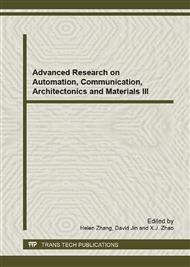[1]
M.J. Allen, V.C. Tung and R.B. Kaner: Chem. Rev. Vol. 110 (2010), p.132.
Google Scholar
[2]
H. Kim, A.A. Abdala and C.W. Macosko: Macromolecules Vol. 43 (2010), p.6515.
Google Scholar
[3]
T. Kuilla, S. Bhadra, D. Yao, N.H. Kim, S. Bose and J.H. Lee: Prog. Polym. Sci. Vol. 35 (2010), p.1350.
Google Scholar
[4]
J.R. Potts, D.R. Dreyer, C.W. Bielawski and R.S. Ruoff: Polymer Vol. 52 (2011), p.5.
Google Scholar
[5]
R. Verdejo, M.M. Bernal, L.J. Romasanta and M.A. Lopez-Manchado, J. Mater. Chem. Vol. 21 (2011), p.3301.
DOI: 10.1039/c0jm02708a
Google Scholar
[6]
Y.K. Yang, C.E. He, R.G. Peng, A. Baji, X.S. Du, Y.L. Huang, X.L. Xie and Y. -W. Mai: J. Mater. Chem. Vol. 22 (2012), p.5666.
Google Scholar
[7]
Y.K. Yang, L.J. Yu, R.G. Peng, Y.L. Huang, C.E. He, H.Y. Liu, X.B. Wang, X.L. Xie and Y. -W. Mai: Nanotechnology Vol. 23 (2012), p.225701.
Google Scholar
[8]
Y.K. Yang, C.E. He, W.J. He, L.J. Yu, R.G. Peng, X.L. Xie, X.B. Wang and Y. -W. Mai: J. Nanopart. Res. Vol. 13 (2011), p.5571.
Google Scholar
[9]
Y. Liang, D. Wu, X. Feng and K. Müllen: Adv. Mater. Vol. 21 (2009), p.1679.
Google Scholar
[10]
K.A. Mkhoyan, A.W. Contryman, J. Silcox, D.A. Stewart, G. Eda, C. Mattevi, S. Miller and M. Chhowalla: Nano Lett. Vol. 9 (2009), p.1058.
DOI: 10.1021/nl8034256
Google Scholar
[11]
H. -K. Jeong, Y.P. Lee, R.J.W.E. Lahaye, M. -H. Park, K.H. An, I.J. Kim, C. -W. Yang, C.Y. Park, R.S. Ruoff and Y.H. Lee: J. Am. Chem. Soc. Vol. 130 (2008), p.1362.
Google Scholar
[12]
H. -K. Jeong, L. Colakerol, M.H. Jin, P. -A. Glans, K.E. Smith and Y.H. Lee: Chem. Phys. Lett. Vol. 460 (2008), p.499.
Google Scholar
[13]
T. Fukushima, A. Kosaka, Y. Ishimura, T. Yamamoto, T. Takigawa, N. Ishii and T. Aida: Science Vol. 300 (2003), p. (2072).
DOI: 10.1126/science.1082289
Google Scholar
[14]
M. Abdalla, D. Dean, D. Adibempe, E. Nyairo, P. Robinson and G. Thompson: Polymer 48 (2007), p.5662.
DOI: 10.1016/j.polymer.2007.06.073
Google Scholar
[15]
Y.S. Song and J.R. Youn: Carbon Vol. 43 (2005), p.1378.
Google Scholar
[16]
J. Zhu, H.Q. Peng, F. Rodriguez-Macias, J.L. Margrave, V.N. Khabashesku, A.M. Imam, K. Lozano and E.V. Barrera: Adv. Funct. Mater. Vol. 14 (2004), p.643.
DOI: 10.1002/adfm.200305162
Google Scholar
[17]
T. Ramanathan, A.A. Abdala, S. Stankovich, D.A. Dikin, M. Herrera-Alonso, R.D. Piner, D.H. Adamson, H.C. Schniepp, X. Chen, R.S. Ruoff, S.T. Nguyen, I.A. Aksay, R.K. Prud'homme and L.C. Brinson: Nat. Nanotechnol. Vol. 3 (2008), p.327.
DOI: 10.1038/nnano.2008.96
Google Scholar
[18]
Z. Wang, X.T. Yang, Q. Wang, H. T. Hahn, S. Lee, K. -H. Lee and Z. Guo: Int. J. Smart Nano Mater. Vol. 2 (2011), p.176.
Google Scholar
[19]
M.P. Scott, M. Rahman and C.S. Braze: Eur. Polym. J. Vol. 39 (2003), p. (1947).
Google Scholar



